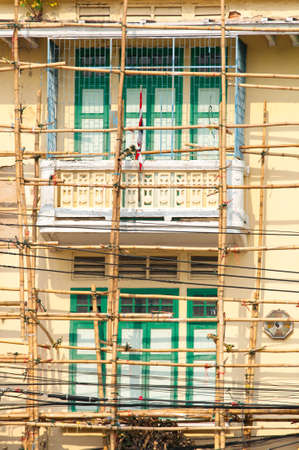Popular Materials for Balcony Construction in India
When planning a balcony in India, selecting the right construction materials is crucial due to the country’s diverse climates and unique cultural preferences. The most widely used material is RCC (Reinforced Cement Concrete), which offers strength, durability, and resistance to weather conditions, making it suitable for both urban apartments and independent houses. Brickwork remains a classic choice, valued for its thermal insulation properties that help keep interiors cool during hot Indian summers. Steel is frequently used for railings and frames because of its modern look and robust nature, while glass panels are increasingly popular in metropolitan areas for their aesthetic appeal and ability to maximize natural light. Additionally, many homeowners consider traditional materials such as red clay tiles or locally sourced stone for flooring or decorative elements, especially in South Indian or heritage-style homes. These options not only reflect regional architectural styles but also ensure comfort by adapting to local temperatures and humidity levels. Choosing the appropriate mix of these materials not only ensures structural integrity but also supports Vastu compliance and complements the overall design sensibilities across different parts of India.
2. Choosing Weather-Resistant and Sustainable Options
When planning a balcony in India, it is crucial to select materials that can withstand the country’s diverse climatic conditions—from the heavy monsoons of Kerala to the intense heat of Rajasthan. Sustainability and eco-friendliness are also becoming important considerations for modern Indian homeowners, in alignment with both vastu principles and environmental consciousness.
India’s weather challenges include high humidity, prolonged rainfall, strong sunlight, and occasional dust storms. Materials chosen should be durable, require minimal maintenance, and have a low impact on the environment. Below is a comparison of popular balcony construction materials suitable for Indian conditions:
| Material | Weather Resistance | Sustainability | Common Indian Usage |
|---|---|---|---|
| UPVC (Unplasticized Polyvinyl Chloride) | Excellent against rain & heat | Recyclable; long lifespan | Windows, doors, railings |
| Treated Wood (Teak, Sal, Bamboo) | Good if properly treated; vulnerable to termites | Bamboo is highly sustainable; others depend on sourcing | Flooring, furniture, decorative elements |
| Stainless Steel/Aluminium | Highly resistant to rust & corrosion | Recyclable; low maintenance | Railings, support structures |
| Ceramic Tiles/Terracotta | Resistant to water & sun damage | Naturally sourced; energy-intensive production | Flooring, wall cladding |
| Nano-Coated Glass | Withstands rain & UV rays; needs safety features | Recyclable; modern manufacturing methods improve efficiency | Balcony facades, partitions |
| Composite Decking (Wood-Plastic Composite) | Moisture-proof & termite resistant | Made from recycled materials; low upkeep | Flooring solutions in urban homes |
Sustainable Choices: What to Prioritise?
For eco-conscious Indian families, bamboo and recycled composites stand out as excellent options due to their renewability and lower carbon footprint. Always look for locally-sourced materials where possible—this reduces transportation emissions and supports local industries. For example, terracotta tiles from Tamil Nadu or bamboo from Assam not only blend with regional aesthetics but also promote traditional craftsmanship.
Vastu Perspective on Material Selection
According to vastu shastra, natural materials like wood and stone bring positive energy to living spaces. Avoid using too much metal in northern balconies as it is believed to disrupt harmonious energy flow. Incorporate earthy tones and textures for flooring and railings to align with vastu recommendations while ensuring weather resilience.
Key Takeaway for Indian Homes:
Selecting the right material for your balcony construction is a blend of durability against harsh Indian climates, vastu compliance, and eco-friendliness. Prioritise quality over cost alone—a well-chosen sustainable material will ensure your balcony remains beautiful and functional for years while contributing positively to your home’s energy and environment.

3. Vastu Guidelines for Balcony Orientation and Placement
When planning a balcony in your Indian home, following Vastu Shastra principles is believed to attract positive energy and promote wellbeing. The direction, location, and height of the balcony are crucial elements in ensuring harmony and prosperity. According to traditional Vastu guidelines, the ideal orientation for a balcony is towards the North, East, or North-East. These directions allow maximum exposure to sunlight and fresh air, which are considered vital for health and happiness in Indian culture.
Key Directions for Balcony Placement
Vastu experts recommend avoiding balconies on the South or West sides of the house as these directions may invite excessive heat and negative influences. Balconies facing East bring in the energising rays of the morning sun, supporting a vibrant start to the day. The North and North-East directions are linked with wealth and spiritual growth, making them highly auspicious for relaxation spaces like balconies.
Optimal Height and Levels
The level at which you construct your balcony also matters in Vastu. It is advisable that balconies should not be higher than the main roof or living space; keeping them at a slightly lower level helps channel beneficial energies into your home. For multi-storey buildings, ensure that each balcony aligns uniformly with others to maintain balance.
Integration with Indian Lifestyle
In Indian homes, balconies often serve as transitional spaces for socialising, growing Tulsi plants, or even performing morning prayers. By aligning the balcony according to Vastu Shastra, you create an inviting atmosphere that nurtures both family bonds and spiritual wellbeing. Adhering to these placement tips not only respects tradition but also enhances the functional beauty of your home’s design.
4. Colour and Décor Selection According to Vastu
Choosing the right colours, plants, and decorative elements for your balcony is not just about aesthetics in India; it’s deeply connected to Vastu Shastra, the ancient science of architecture. Following Vastu principles ensures that your balcony attracts positivity, prosperity, and good health for your family.
Vastu-Recommended Colours for Balconies
Colour plays a significant role in influencing the mood and energy of a space. According to Vastu, certain colours are considered auspicious for balconies based on their direction and intended use. The following table summarises favourable colour options:
| Balcony Direction | Favourable Colours (As per Vastu) |
|---|---|
| East | Light blue, Green, White |
| North | Cream, Blue, Light Green |
| South | Pale Red, Orange, Pink |
| West | Grey, Yellow, Off-white |
Plants That Enhance Balcony Energy
Adding plants is an essential part of balcony décor in Indian homes. Not only do they purify the air, but specific species are believed to bring luck and prosperity. Here are some plants recommended by Vastu experts:
- Tulsi (Holy Basil): Known for spiritual and health benefits; ideally placed in the North or East.
- Bamboo: Symbolises growth and good fortune; place in the East or South-East.
- Aloe Vera: Attracts positive energy; best suited for the North or West side.
- Money Plant: Brings wealth; place towards North or East direction.
- Jasmine: Encourages peace and happiness; plant in South-East corner for best results.
Décor Elements for Balcony Harmony
When it comes to decorating balconies, Vastu suggests keeping the space clutter-free and using natural materials wherever possible. Use wooden or bamboo furniture instead of metal to create a warm, welcoming ambience. Soft furnishings like cushions should follow the colour recommendations mentioned above. Wind chimes made of wood or ceramic can also be hung in the North-West to attract positive vibrations.
Traditional Touches with a Modern Twist
Add earthen pots or terracotta figurines as these are highly auspicious in Indian culture. You may also use traditional lanterns or diyas (lamps) during festivals to enhance spiritual vibes. For those who enjoy cross-cultural influences, integrating subtle Indian motifs with contemporary design can strike a perfect balance between tradition and modernity.
Key Takeaways:
- Select colours based on your balcony’s direction for maximum harmony as per Vastu Shastra.
- Incorporate auspicious plants that not only beautify but also energise your space positively.
- Opt for décor elements rooted in Indian tradition while blending them with modern aesthetics to create a unique yet harmonious balcony environment.
By thoughtfully choosing colours, plants, and décor aligned with Vastu principles, you ensure that your balcony becomes a source of joy, peace, and prosperity for your home in India.
5. Local Considerations: Regional Styles and Community Norms
When planning balcony construction in India, it is essential to pay close attention to the unique regional architectural styles and the preferences of your local community. Across the vast Indian landscape, balcony designs vary significantly due to climate, cultural influences, and traditional building practices. For instance, in Rajasthan, intricate jaali work and stone are commonly used for both aesthetics and climate control, while in Kerala, wooden railings and sloped tiled roofs reflect the coastal monsoon environment. In northern regions like Punjab or Himachal Pradesh, people often prefer enclosed balconies with glass or wooden panels for insulation against cold winds. Meanwhile, in metropolitan cities such as Mumbai or Bengaluru, modern materials like stainless steel and glass are popular to complement high-rise living and contemporary tastes.
Community norms also play a vital role in material selection and design elements. Many residential societies have guidelines on colours, railing heights, or façade treatments to maintain uniformity and harmony within the neighbourhood. Before finalising your balcony materials—whether you opt for durable UPVC, traditional terracotta tiles, or ornate wrought iron—consult with your Residents’ Welfare Association (RWA) or local municipal office to ensure compliance with existing regulations.
Adapting your balcony’s appearance by incorporating locally sourced materials not only supports regional craftsmanship but also ensures that your space blends seamlessly into its surroundings. This approach honours Indias rich architectural diversity and enhances social acceptance within your locality. By respecting both Vastu principles and community expectations, homeowners can create balconies that are both auspicious and admired by neighbours.
6. Maintenance Tips for Indian Balconies
Expert Advice on Upkeep in Indian Conditions
Balconies in India face unique challenges due to the country’s diverse climate, from monsoon rains to scorching summers and dusty winds. Regular maintenance is essential not only to preserve structural integrity but also to ensure positive Vastu energy flow. Here are some expert recommendations tailored to Indian weather conditions:
Cleaning and Routine Care
Frequent cleaning prevents accumulation of dust, pollen, and pollution—especially in urban areas like Mumbai or Delhi. Sweep your balcony daily and wash the floors weekly using mild detergents suitable for local stone or tile materials. For wooden surfaces, use a soft brush and avoid excess water to prevent rot, particularly important during the humid monsoon months.
Waterproofing Essentials
Indian monsoons can be harsh, leading to seepage and dampness if balconies are not properly waterproofed. Inspect joints, railings, and floor tiling annually before the rains begin. Apply high-quality waterproof sealants and check for any cracks or weak spots in concrete or brickwork. In coastal regions such as Chennai or Kolkata, anti-corrosive paints on metal railings are highly recommended.
Seasonal Protection Measures
During summer, direct sunlight can fade tiles and damage outdoor furniture. Use UV-resistant coatings on flooring and opt for bamboo blinds or traditional jute curtains (“chiks”) to reduce heat while maintaining airflow—both practical and culturally familiar choices across India. In winter, especially in North India, cover plants and furniture to protect against cold snaps and fog-related moisture.
Vastu Considerations in Maintenance
Regularly declutter your balcony to maintain good Vastu energy flow. Keep the north-east corner clean and free of heavy objects to promote positivity. Avoid placing broken pots or unused items; replace with healthy plants or Vastu-friendly décor like wind chimes or traditional “diya” lamps for auspiciousness.
Long-Term Sustainability
Choose durable, locally-sourced materials for repairs, as these often withstand regional weather better and harmonize with traditional Indian aesthetics. Engage local experts for periodic inspections, especially in older buildings where heritage preservation matters alongside modern safety standards.
By following these maintenance tips specific to Indian climates and cultural practices, you can ensure your balcony remains beautiful, functional, and harmonious according to both modern needs and ancient wisdom.

